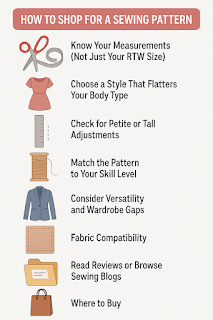 |
| “This cozy reversible rice bag is perfect for hot or cold relief, especially during the cold season. It's easy to sew and even easier to love!” |
Whether it's a chilly winter night or a hot summer day, a handmade rice bag can provide the comfort you need. In this tutorial, I’ll show you how to sew a dual-purpose rice bag that can be microwaved for warmth or frozen for cooling. It's a simple, beginner-friendly sewing project—and a great homemade gift!
🧵 Supplies You’ll Need:
100% cotton fabric (avoid synthetic blends)
Matching thread
Uncooked rice, flaxseed, or dried corn (about 2–3 cups)
Scissors or rotary cutter
Ruler or measuring tape
Pins or clips
Funnel (optional, but helpful!)
Sewing machine
Iron
Freezer-safe plastic bag (for storing the bag when used cold)
✨ Optional:
Essential oils (like lavender) for a soothing scent
Removable cover for washing
📏 Step 1: Cut the Fabric
Cut two rectangles of fabric:
Size suggestion: 10” x 6” (for a small bag) or 18” x 8” (for a full-size neck wrap)
You can adjust the size depending on the purpose — lap, neck, or hands.
🪡 Step 2: Pin and Sew Three Sides
Place the two fabric pieces right sides together.
Pin or clip them in place.
Sew around three sides with a ½” seam allowance, leaving one short end open.
Backstitch at the beginning and end for strength.
🔄 Step 3: Turn Right Side Out and Press
Turn the bag right side out.
Use a chopstick or pencil to gently push out the corners.
Press the seams flat with an iron for a clean finish.
🌾 Step 4: Fill the Bag
Use a funnel to pour in uncooked rice or other filler.
Fill the bag about 2/3 full — you want it to be flexible and not overly stuffed.
Optional: Add a few drops of essential oil for fragrance.
🧵 Step 5: Close the Opening
Fold the raw edges of the open end inward about ½”.
Pin and topstitch the opening closed close to the edge.
For extra strength, you can sew a double line of stitching.
💡 Optional: Sew Internal Channels
To keep the filling evenly distributed, sew vertical or horizontal seams to create channels (like a quilted pillow).
Mark with chalk or a fabric pen and stitch carefully across the bag, taking care not to sew over the filler.
❄️ To Use as a Cold Pack:
Place your rice bag inside a plastic freezer bag to protect it from moisture.
Freeze for at least 1–2 hours before using.
Ideal for cooling down on hot days or soothing aches.
🔥 To Use as a Heat Pack:
Microwave for 1 to 2 minutes, depending on your microwave wattage.
Shake the bag to distribute the heat evenly before using.
Always check the temperature before applying it to your skin.
🧼 Care Tips:
Spot clean only (unless you’ve added a removable cover).
Store in a cool, dry place when not in use.
🧣 Enhance Your Rice Bag: Dual Covers for Every Season
Take your project to the next level by sewing your rice bag from sturdy 100% cotton or muslin and creating interchangeable seasonal covers!
Winter cover: Fleece or flannel with cozy novelty prints.
Summer cover: Lightweight 100% cotton in fresh, breathable prints.
Why It’s a Great Idea:
You can microwave or freeze the same rice bag all year long. (Unless you want to sew multiple rice bags.)
Removable covers are washable and customizable.
Seasonal covers make your handmade items more marketable and gift-worthy.
📌 Marketing & Selling Tips:
Offer themed seasonal cover sets.
Personalize it with initials or fun fabric combinations.
Use lifestyle photos in your listings to show the bag used in different seasons.
Great for craft fairs or as thoughtful handmade gifts.
📥 Download the Free Rice Bag Tutorial PDF Version!
Want to keep this tutorial handy or share it with friends?
👉 Click here to download the complete tutorial as a PDF
💬 If you found this tutorial helpful, please share it with your sewing friends or pin it on Pinterest! Your support helps keep free projects like this coming.



%20Clothes%20Image.png)


